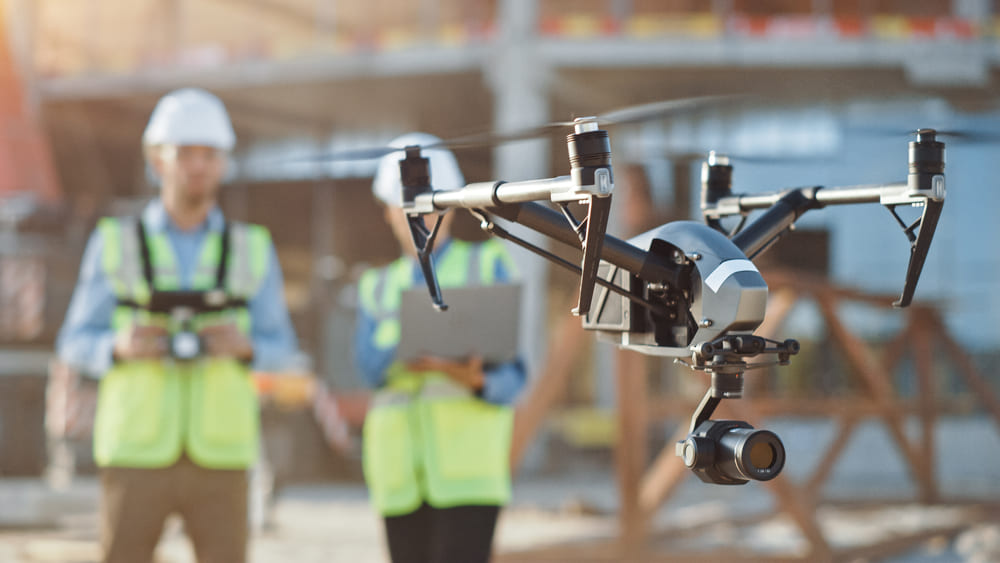Pest control has always been a crucial aspect of culture: maintaining the cleanliness and safety of our homes and workplaces. Now, as new technologies emerge, the field of pest control is rapidly evolving and we couldn’t be more thrilled.
We previously discussed what critters to look out for in spring. Now, let’s discuss some emerging trends and innovations in the world of pest control, including the use of drones, pest-resistant building materials and other exciting examples. We will also explore the potential benefits and drawbacks of these new technologies and their impact on the future of the industry.
Drones for Pest Control
Drones are already being used in pest control for surveillance and treatment purposes. Drones let pest control professionals quickly and easily identify areas that require treatment. Then, drones equipped with spray nozzles can deliver pesticides to hard-to-reach areas. For example, the roofs of large buildings, reduce the need for human workers to climb up to dangerous heights.
The use of drones for pest control is still in its early stages, but it has the potential to revolutionize the industry. Drones can cover large areas quickly and efficiently, reducing the time and labor required for pest control. However, there are also some concerns about the use of drones, particularly with regard to privacy and safety. As drones become more prevalent in the pest control industry, regulations and guidelines will continue to be established to ensure their safe and ethical use.
Pest-Resistant Building Materials
Another emerging trend in pest control is the development of pest-resistant building materials. For example, researchers are developing concrete that repels termites and new coatings for wood that make it more resistant to wood-boring insects. This technology has the potential to reduce the need for pesticides and other treatments, making buildings safer and more environmentally friendly.
The development of pest-resistant building materials is still in its early stages, and it will take time for these materials to become widely available. However, they have the potential to significantly reduce the need for more traditional methods.
Other Emerging Pest Control Technologies
There are many other emerging technologies in the world of pest control, including:
Biological Controls
Researchers are developing natural predators and parasites to control pest populations. These controls can often be more environmentally friendly than traditional pesticides.
Smart Traps
New traps equipped with sensors and cameras can be used to monitor pest populations and track their movements, helping pest professionals target their treatments more effectively.
Heat Treatment
Heat can be used to kill bedbugs and other pests without the use of chemicals. This method is particularly effective in multi-unit buildings where chemicals can be difficult to use safely.
Benefits and Drawbacks To Professional Pest Control Services
The use of emerging technologies in pest control has many potential benefits:
Improved Safety
Many emerging technologies, like drones and heat treatments, are safer for humans and the environment than traditional pesticides.
Greater Efficiency
Emerging technologies can reduce the time and labor required for pest control, making treatments faster and more cost-effective.
Improved Accuracy
Technologies like smart traps and drones can help pest control professionals target their treatments more accurately, reducing the amount of pesticides needed.
However, there are also some drawbacks to emerging technologies in pest control:
Cost
Many emerging technologies are expensive to develop and implement, which may make them inaccessible to some pest control professionals and consumers for the immediate future.
Complexity
Some emerging technologies, such as drones and smart traps, require specialized knowledge and training to use effectively.
Ethical Concerns
Emerging technologies raise ethical concerns, particularly with regard to privacy and safety. Regulations and guidelines will need to be established to ensure their safe and ethical use.
Pest Control Considerations
The future of pest control is evolving rapidly, with new technologies and innovations emerging all the time. These technologies have the potential to revolutionize the industry, making treatments faster, safer and more cost-effective, even as they raise some concerns about cost, complexity and ethics.
As with any new technology, it is important to carefully consider the potential benefits and drawbacks before implementing it in the real world. Pest control professionals and consumers must work together to ensure that emerging technologies are used safely and ethically, while also taking into account the environmental impact and cost-effectiveness of these new methods.
Put Your Trust in Willis Exterminating Pest Control
Overall, the future of pest control is bright, with emerging technologies promising to improve the safety, efficiency and accuracy of pest control treatments. As they continue to develop and evolve, we can look forward to a cleaner, safer and more sustainable world of pest-free living for ourselves and future generations.
As one of the leading pest control companies in Dallas, Texas, Willis Exterminating is committed to staying at the forefront of emerging technologies and innovations in the field of pest control. Whether you’re dealing with termites, bedbugs or other pests, our team of professionals has the knowledge and expertise to provide safe and effective treatments that meet your specific needs.
If you’re interested in learning more about our services or how emerging technologies can improve your pest control treatments, we encourage you to contact us today. Our team is always happy to answer your questions and provide you with the information you need to make informed decisions about your pest control needs. Don’t wait, call Willis Exterminating today and take the first step towards a cleaner, safer and more pest-free environment!

